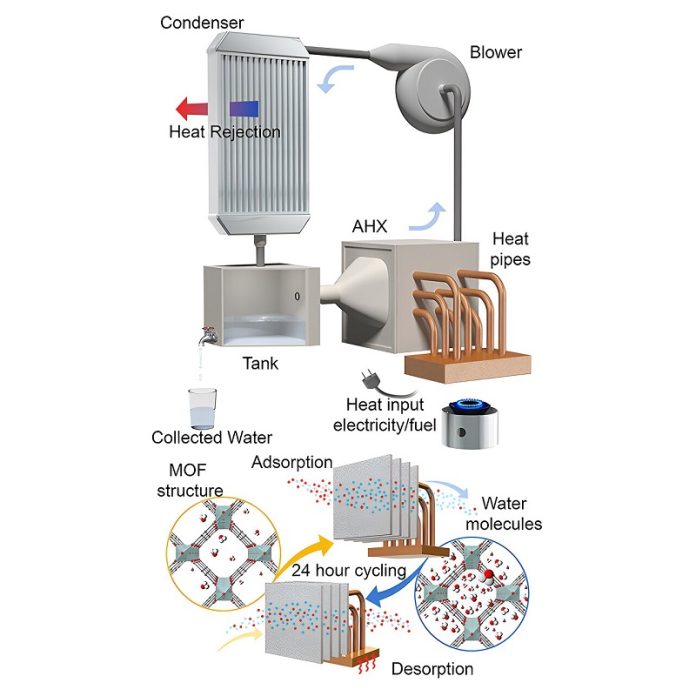
Imagine getting clean drinking water straight from the air, even in the driest places on Earth.
This dream is becoming a reality thanks to a new device developed by researchers at the University of Utah.
This compact machine can produce water from the air, potentially providing a vital resource for people in areas with chronic water shortages.
The Earth’s atmosphere holds an enormous amount of water—enough to fill Utah’s Great Salt Lake 800 times.
However, extracting this moisture efficiently and affordably has been challenging. Existing atmospheric water harvesting (AWH) technologies are often too large, costly, and inefficient for widespread use.
The new study, led by Sameer Rao, an assistant professor of mechanical engineering, introduces a groundbreaking device that could change that.
The research was published in the journal Cell Reports Physical Science.
The device is a two-step prototype that uses special materials to capture water from the air and then releases it as liquid.
“Hygroscopic materials have a natural affinity for water. They soak up water wherever you go. A great example is the material inside diapers,” explained Rao. His team used a specific type of hygroscopic material called a metal-organic framework (MOF).
These materials, like tiny Lego blocks, can be arranged to create structures perfect for capturing water vapor from the air.
Rao and graduate student Nathan Ortiz, the study’s lead author, developed a prototype using aluminum fumarate. This MOF material was fashioned into panels that collect water as air passes through them. “The water molecules get trapped on the surfaces of our material, and that’s a reversible process,” Ortiz said. “Just a gram of this material holds as much surface area as two football fields, which means it can capture a lot of water.”
The research was supported by the DEVCOM Soldier Center, a program run by the Department of Defense. The Army is interested in this technology to keep soldiers hydrated in remote areas without reliable water sources. “We specifically looked at this for defense applications so that soldiers have a small compact water generation unit and don’t need to lug around large canteens of water,” Rao said. “This would literally produce water on demand.”
The team has filed for a preliminary patent and sees potential beyond military use. They envision households using the device to meet daily drinking water needs, which is about 15 to 20 liters per day.
In tests, the prototype produced 5 liters of water per day per kilogram of adsorbent material. In just three days, this device could outperform carrying water manually. The second step of the process involves applying heat, such as from an Army camping stove, to release the captured water as liquid.
Nascent technologies for AWH often rely on solar power, which limits them to daytime operation and requires batteries, adding weight and complexity. In contrast, this new device uses energy-dense fuel like white gasoline, making it more suitable for arid conditions.
This innovative approach to harvesting water from the atmosphere could bring clean drinking water to those who need it most, offering a practical solution to one of the world’s most pressing problems.



